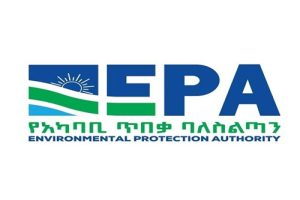BY STAFF REPORTER
As a country endowed with a huge amount of water resources Ethiopia is utilizing the resources for the generation of hydroelectric power. It is working hard to respond to its large level of energy needs by building mega hydroelectric power dams on its large river basins.
As compared to the mega hydropower plants, Micro Hydro Power (MHP) plants are less used. But considering the potential for developing the plants, MHP is decentralized, renewable, robust, and simple technology.
According to energypedia, it only takes a small amount of flow (as little as few liters per minute) or a drop as low as 1 m to generate electricity with micro-hydro. Electricity can be delivered as far as 1 km away to the location where it is being used. If planned carefully and well adapted to the environmental conditions, micro-hydro power schemes produce a continuous and predictable supply of electrical energy in comparison to other small-scale renewable technologies.
The peak energy season is during the winter months when large quantities of electricity are required. MHP is considered to function as a ‘run-of-river system, meaning that the water passing through the generator is directed back into the stream with relatively little impact on the surrounding ecology. In comparison to large hydropower, MHP thus only has a little negative environmental impact. Negative socio-economic impacts are even insignificant in comparison. Further advantages include low distribution and running costs (requires no fuel and only low maintenance) as well as local implementation and management. Moreover, hydropower is a durable and robust technology; systems typically last for 50 years or more without major new investments.
Furthermore, MHP can be considered a cost-effective energy solution. Building a small-scale hydro-power system can cost from 1,000 dollar – 20,000 dollar, depending on site electricity requirements and location. Maintenance fees are relatively small in comparison to other technologies. Due to the low-cost versatility and longevity of MHP, developing countries can manufacture and implement the technology to help supply much-needed electricity to small communities and villages. If the MHP plant produces a large amount of excess energy, some power companies might buy back electricity overflow. Furthermore, it is possible to supplement the micro hydropower with intake from the power grid.
Flowing water has been one of the easiest sources of energy. Watermills grind grains and can run a generator. Many water mills were in operation centuries ago. Later, the potential energy was tapped to run turbines and generate power. Initially, small hydroelectric projects were set up. Since many of these projects were in mountainous terrains, the operation of these plants depended on the availability of water.
There are a large number of streams, canals and rivulets with drops at many places. Today new technologies are available for the construction of water turbines for a small head of 2 – 3 meters. Hence, it is possible to set up a large number of small plants. These are known as micro and mini-hydro plants because of their capacity. Plants with capacities up to 500 kW are called micro-hydro plants and with capacities up to 50 kW as mini-hydro plants. We should encourage setting up such plants in the region.
In Ethiopia, few attempts are made to utilize micropower dams by institutions like universities. In Benishangul-Gumuz Regional State there are significant rivers that can generate mini-hydropower for rural electrification. As indicated above the topography varies from over 2000 m.a.s.l to the lowlands below 500 m.a.s.l that indicates the topography is mountainous.
As a result, there is a significant number of rivers, which can be utilized as mini-hydropower development. In this context, the region could plan for the development of mini-hydro for rural electrification programmes.
In the Assosa zone other than the Haha river, five rivers have the potential for mini-and micro hydropower potential. Currently, most of them are used by small flour mills for power generation. In the Kamashi zone, there are four rivers of which one of them is used by flour mills.
In three woredas of the Metekel zone, there are a total of six rivers that can be developed for mini and micro-hydropower.
As in the other zones of the region, the rivers are currently used by flour mills for their requirement of power.
The resource potential of mini-and large-hydropower potential is an attractive resource in the region. In addition, the different types of rivers that have irrigation potential also could have a potential for power generation in the region.
There are, however, several disadvantages that need to be taken into account. MHP plants require certain site conditions and are thus not suitable for any location. To take full advantage of the electrical potential of small streams, a suitable site is needed. Factors to consider are a distance from the power source to the location where energy is required, stream size (including flow rate, output and drop), and a balance of system components — inverter, batteries, controller, transmission line and pipelines.
Limited technical know-how especially in resource-rich locations might impede hydropower development. Furthermore, the size and flow of small streams may restrict future site expansion as the power demand increases. As MHP plants require no reservoir, electricity generation is highly dependent on a constantly sufficient river discharge. In many locations stream, size will fluctuate seasonally. During the summer months, there will likely be less flow and therefore less power output. Advanced planning and research will be needed to ensure adequate energy requirements are met.
Finally, environmental impacts need to be taken into account. The ecological impact of small-scale hydro is minimal; however, the low-level environmental effects must be taken into consideration before construction begins. Stream water will be diverted away from a portion of the stream, and proper caution must be exercised to ensure there will be no damaging impact on the local ecology or civil infrastructure.
The Ethiopian Herald August 11/2021




